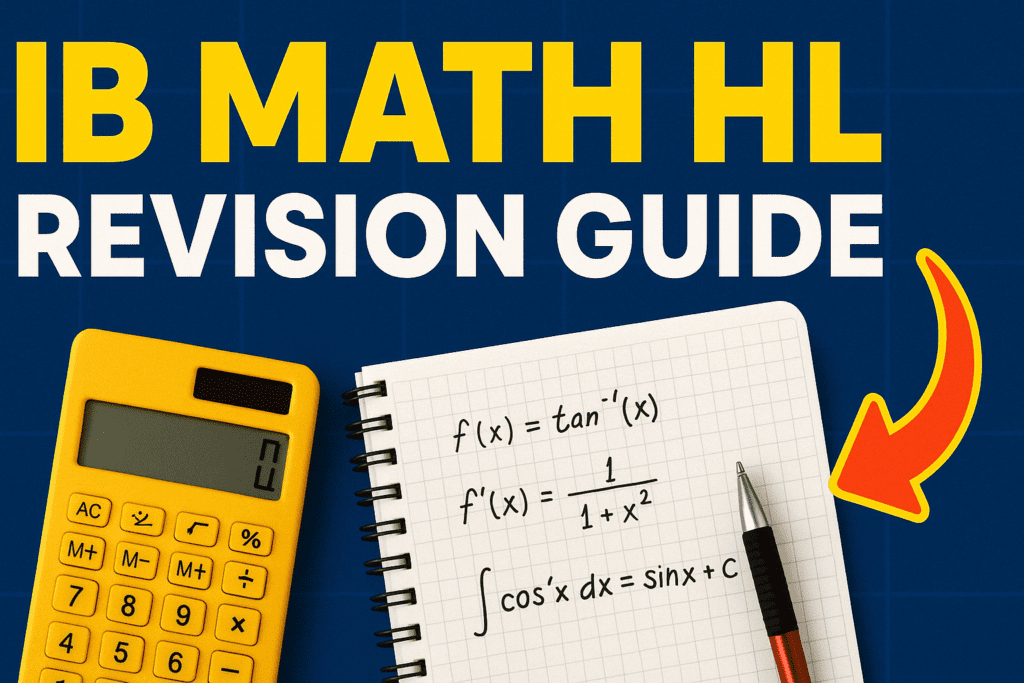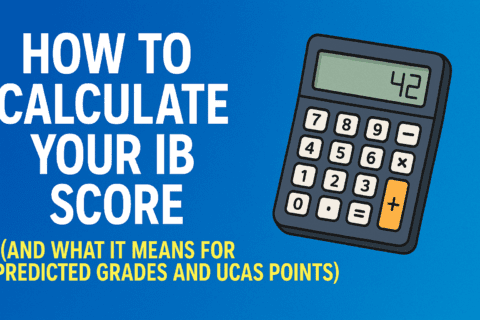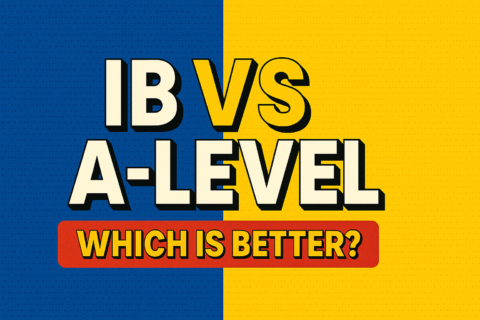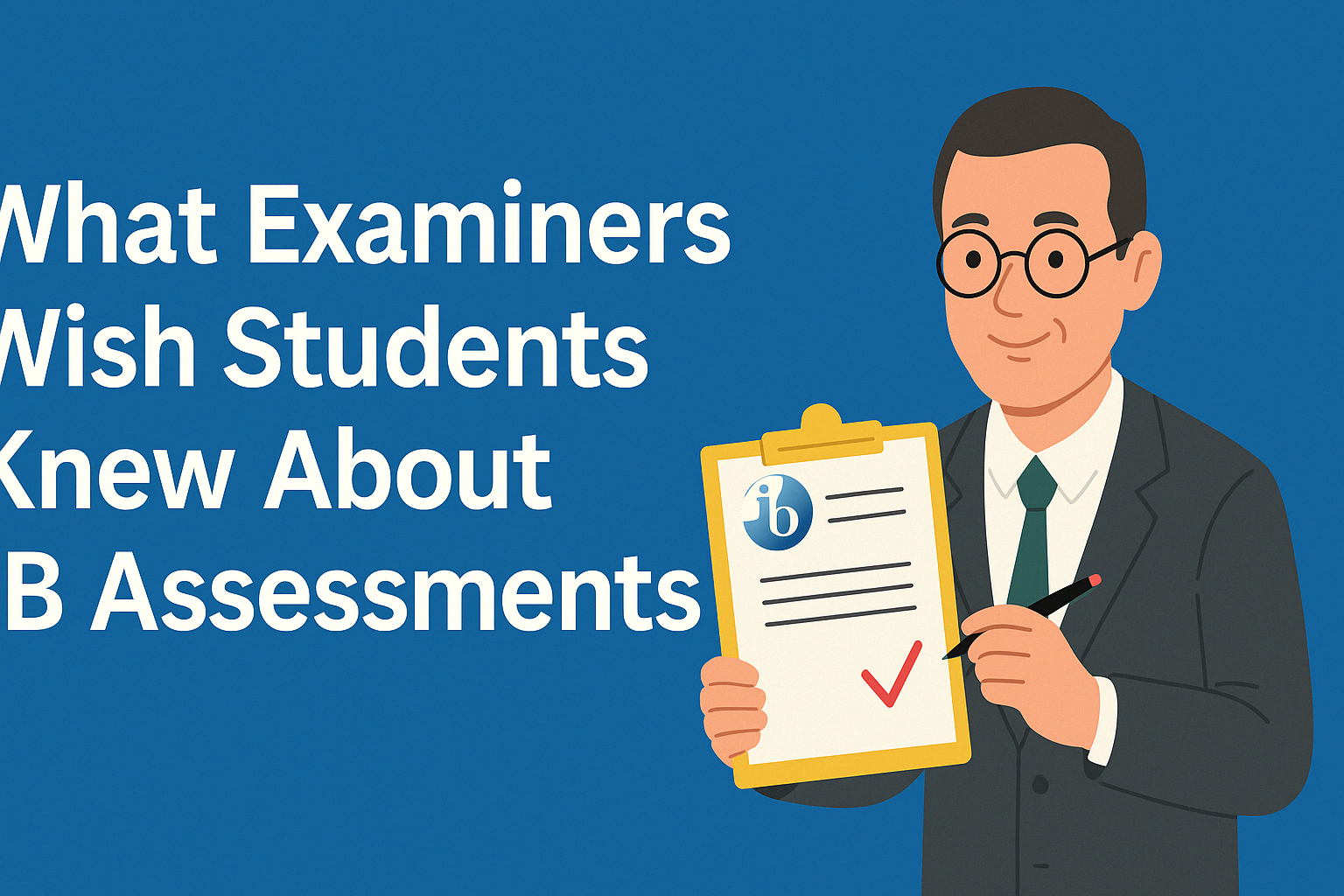IB Math HL Revision Guide: Your Ultimate Roadmap to Success
Preparing for the IB Math HL (Higher Level) exam can feel like climbing Mount Everest — challenging, intense, and rewarding. Whether you’re a student aiming for that coveted 7 or a parent looking to support your child through the journey, this IB Math HL revision guide is your comprehensive companion.
We’ll break down complex topics, offer expert tips, and provide curriculum-specific strategies to help students revise smarter, not harder.
What Is IB Math HL?
IB Math HL was a part of the older curriculum (pre-2019), split into Math HL and SL. It has since been replaced by Mathematics: Analysis and Approaches HL (AA HL) and Mathematics: Applications and Interpretation HL (AI HL).
This guide is focused on the AA HL curriculum, which is closest to the original Math HL in content depth and abstract reasoning.
Key Topics Covered:
Algebra
Functions and Equations
Calculus (Differentiation & Integration)
Trigonometry
Vectors
Probability & Statistics
Complex Numbers (only in HL)
Why Is IB Math HL So Challenging?
IB Math HL is rigorous, demanding not just memorization but deep conceptual understanding and strong problem-solving skills. Students are expected to:
Solve abstract problems
Apply mathematics in unfamiliar contexts
Justify every step logically
Plus, the Internal Assessment (IA) adds another layer of complexity.
How to Structure Your IB Math HL Revision
Here’s a revision roadmap based on proven strategies from high-achieving students and IB educators.
1. Start Early and Plan Backwards
Timeline: Start 3–4 months in advance
Use a backwards calendar: Set your final exam date and work backwards
Allocate time by topic and your personal strengths/weaknesses
2. Master the Syllabus First
Download the official IB syllabus from ibo.org and:
Highlight each sub-topic
Mark concepts as: understood, review needed, or unclear
3. Use the IB Command Terms
Each question uses specific verbs: “Solve,” “Prove,” “Explain.”
Learn what each term expects
Practicing with command terms improves accuracy and time management
4. Prioritize Past Papers
Past paper questions are gold.
Start with topic-wise questions
Move on to full timed papers closer to the exam
Practice Paper 1 (no calculator), Paper 2 (calculator allowed), and Paper 3 (AA HL only)
5. Use Technology Wisely
Leverage your graphic display calculator (GDC).
Get familiar with functions like graphing, solving equations, and stats functions
Use the exact same model you’ll use in the exam
Topic-by-Topic Revision Strategy
Algebra & Functions
Focus on logarithms, exponentials, sequences, and series
Practice complex simplification problems
Calculus
Learn derivative rules (product, quotient, chain) with intuition
Understand applications: optimization, area under curves, rates of change
Integration techniques: substitution, by parts
Probability & Statistics
Learn how to use the GDC to calculate binomial, normal distributions
Review cumulative frequency, mean/variance calculations
Vectors
Be fluent in 3D vector geometry
Know how to calculate angles, projections, shortest distances
Trigonometry
Master identities, graphs, and solving equations
Be comfortable with radians and the unit circle
Complex Numbers (HL only)
Euler’s formula, modulus-argument form, De Moivre’s theorem
Sketching complex numbers and finding roots
Internal Assessment (IA) Tips
The Math HL IA counts for 20% of your final grade.
Key Elements:
Choose a topic that interests you (math in music, finance, nature, etc.)
Use math beyond the SL level
Structure: Introduction > Rationale > Exploration > Reflection > Conclusion
Tips:
Choose your topic early (at least 6 months before exams)
Include visuals and GDC outputs
Reflect deeply on your process
Real-World Student Advice
“Do past papers like your life depends on it. But don’t skip feedback. Going back and understanding why you got something wrong is where the learning happens.” — Amaan, IB HL Graduate
“For IA, I linked cryptography with modular arithmetic. It was fun and scored me a 19/20.” — Leila, IB Math HL Top Scorer
Free Resources on HeLovesMath.com
We’ve curated a collection of helpful revision resources:
Topic-by-topic summaries
Solved past paper questions
IA ideas and structure samples
Free quizzes and GDC tutorials
👉 Explore now: HeLovesMath.com/IB
Summary: Final Revision Checklist
✅ Print out the syllabus and track your mastery ✅ Practice daily using past paper questions ✅ Schedule weekly full-paper mock exams ✅ Final month: focus on Paper 1 & Paper 2 under exam conditions ✅ Don’t forget IA polish & submission deadlines
FAQs (Based on People Also Ask)
What is the best way to revise for IB Math HL?
Start with the official syllabus, practice past paper questions, and focus on conceptual understanding. Use revision guides and online platforms like HeLovesMath.com.
How hard is IB Math HL?
It’s one of the most rigorous subjects in the IB. Strong problem-solving skills, abstract thinking, and consistent practice are key to success.
How many hours should I study for IB Math HL?
Aim for 3–5 hours per week during school, increasing to 10–12 hours per week during revision months.
What is a good IA topic for IB Math HL?
Good IA topics link real-world applications with advanced math. Examples: modeling music waves, predicting stock prices, or analyzing sports statistics.
What calculators are allowed in IB Math HL?
Only IB-approved graphic display calculators (like TI-84, Casio fx-CG50) are allowed. Be sure to practice with your exam model.
Ready to ace IB Math HL? You’ve got the tools. Now, let HeLovesMath.com be your secret weapon.
Happy revising! 🎓





